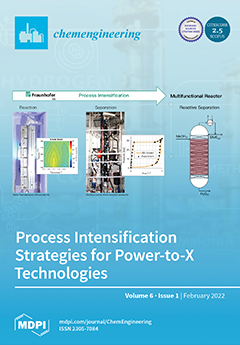Open AccessFeature PaperArticle
Prediction of B20 Storage Tank Precipitate Removal Based on Biodiesel Monoglyceride Content
by
Misri Gozan, Imam Paryanto, Muhammad Arif Darmawan, Muhammad Sahlan, Heri Hermansyah, Eriawan Rismana, Alfan Danny Arbianto, Tirto Prakoso, Mohamed Kheireddine Aroua and Patrick Cognet
Cited by 2 | Viewed by 3698
Abstract
Precipitate in B20 fuel stored in storage tanks can accumulate at the bottom level of the tank and affect the fuel filter, clogging in the fuel distribution and engine system. This study examines the precipitate formation prediction in B20 fuel based on the
[...] Read more.
Precipitate in B20 fuel stored in storage tanks can accumulate at the bottom level of the tank and affect the fuel filter, clogging in the fuel distribution and engine system. This study examines the precipitate formation prediction in B20 fuel based on the monoglyceride content in biodiesel. This research used a modified CSFT method of ASTM D7501 for the precipitation test. Monopalmitin was added to biodiesel with a variation of monoglyceride content. Each biodiesel sample was then blended with petroleum diesel fuel to produce two groups of samples. Each sample was separately soaked in the cooling chamber at constant and room temperature for 21 days. The bottom layer of each B20 fuel sample stored in the measuring cylinder was then pipetted and filtered, washed with petro-ether, vacuum-dried, and weighed for a constant amount of precipitate retained on the filter. The simulation results show that the ratios between the amount of collected precipitate at the bottom layer of the 2-liter measuring cylinder and the total amount of collected precipitate for the 2-liter measuring cylinder increased with the monoglyceride content biodiesel. This ratio was used to predict the amount of accumulated sludge for a given volume of B20 fuel loaded into the storage tank. This study shows the effect of monoglyceride content on the precipitation behaviour in the storage tank concerning general tank storage dimension parameters and B20 loading frequency. This approach can be applied to estimate the sludge removal frequency for biodiesel storage.
Full article
►▼
Show Figures





